5 Innovative Race Cars That Were So Quick They Rewrote The Rulebooks
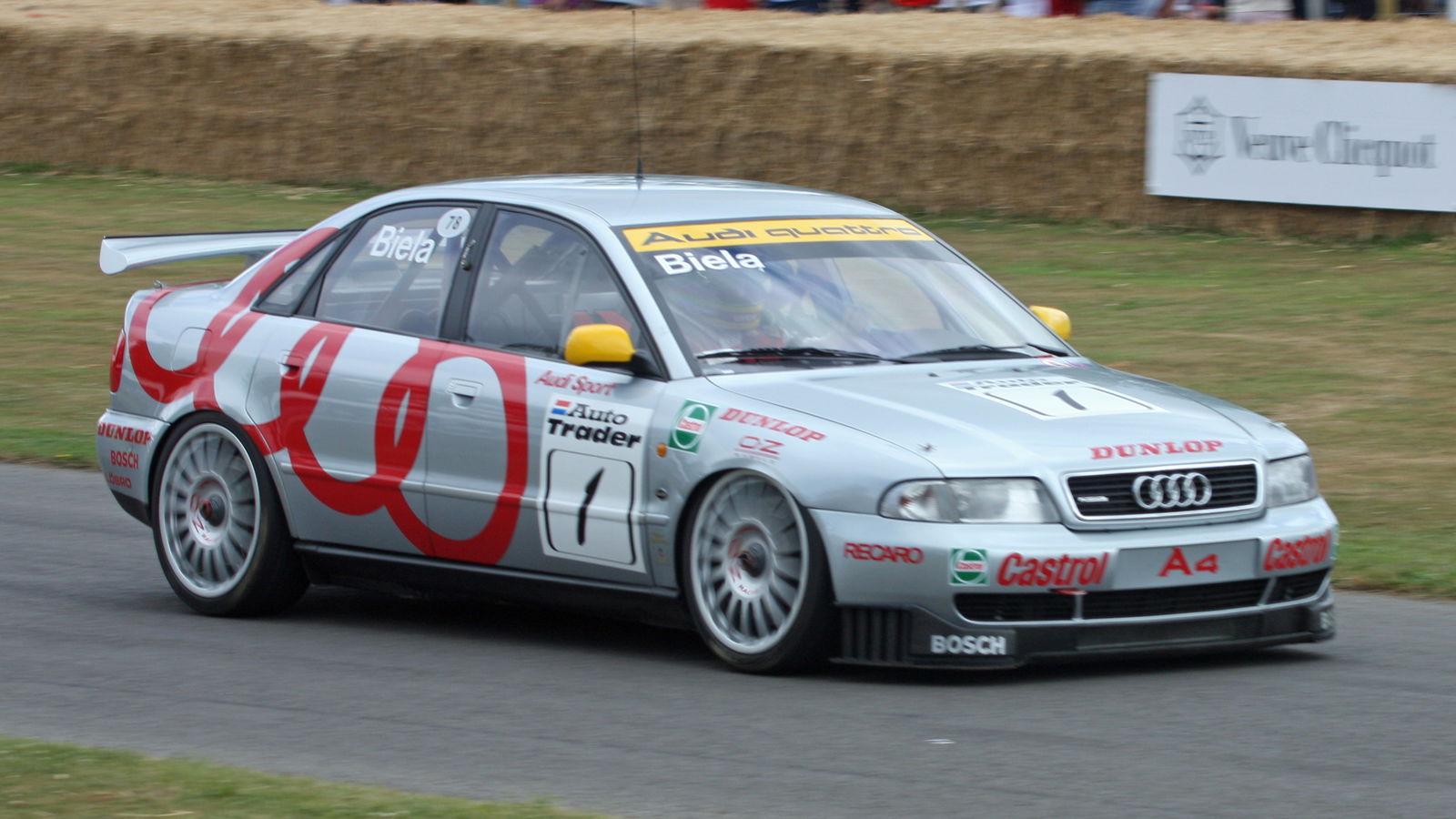
1. Audi Quattro A4 Super Touring BTCC
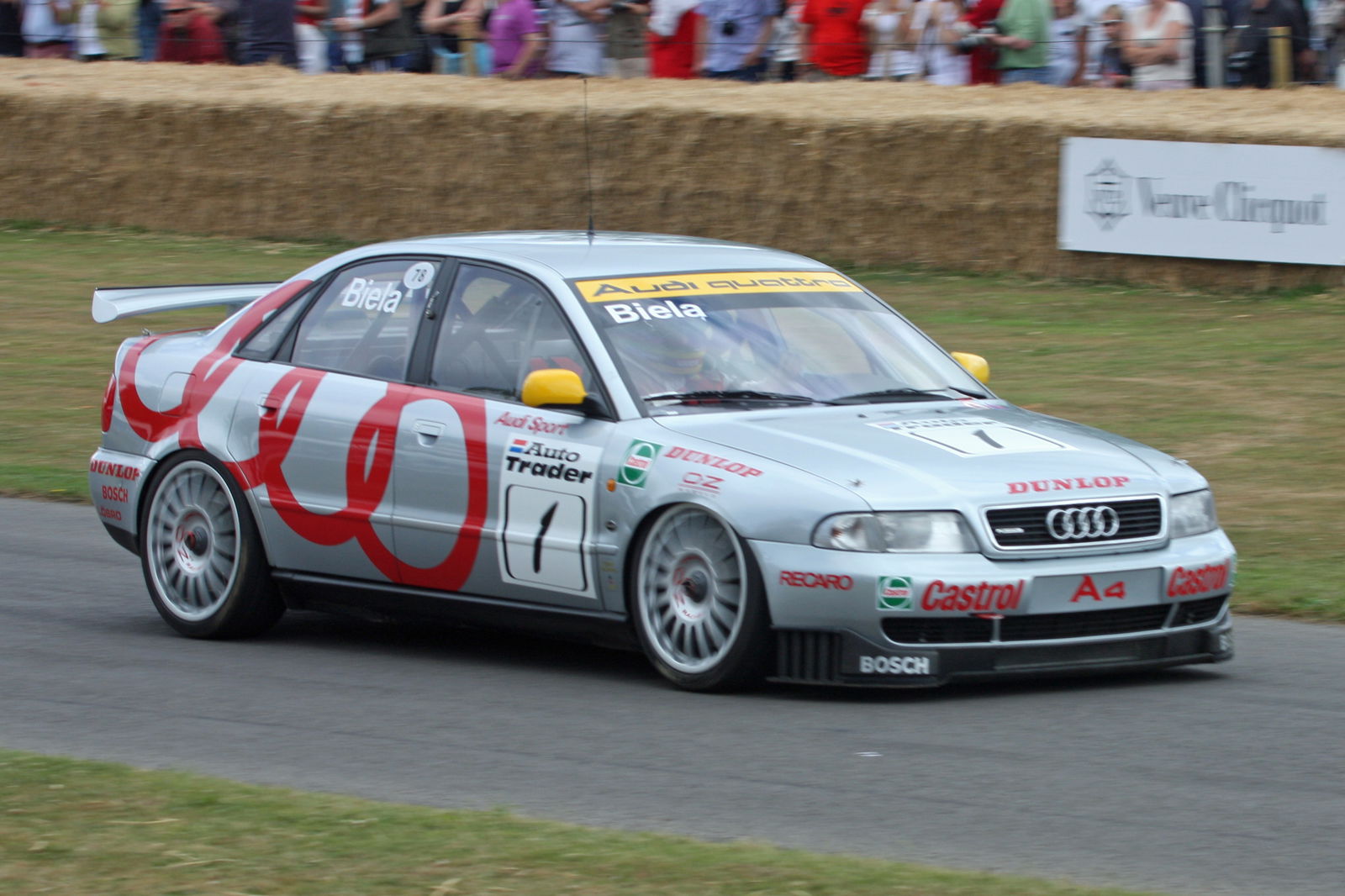
For some (me included), the British Touring Car Championship (BTCC) was at its peak during the mid-1990s; the era of the Super Tourers. National touring car regulations had been re-written in 1993 by the FIA, allowing manufacturers to build highly developed factory-spec race cars. To refresh your memory, this era gave us the bonkers Tom Walkinshaw Racing Volvo 850 T-5R, the iconic Renault Laguna Williams and the stunning Alfa Romeo 155 2.0 TS.
Audi, not wanting to miss out on the action, decided to field its new Audi A4 in the 1996 BTTC to give the car some much needed UK exposure. And never one to miss a golden marketing opportunity, the German manufacturer also spotted a huge gap in the regulations, allowing the team from Ingolstadt to campaign a Quattro variant, making it the only four-wheel drive car on the grid. In the hands of touring car legend Frank Biela, the car was absolutely dominant, winning races at the first four rounds of the championship. As you can imagine, the other manufacturers weren’t too happy with Audi’s ‘unfair’ advantage, and after the seventh round the officials finally caved in, requiring the German cars to run ballast.
Even with the weight penalty, Biela took the title a whopping 92 points ahead of Alain Menu in the rapid Williams Renault. Ultimately, the innovative four-wheel drive system, neutral chassis and powerful 2.0-litre 305bhp four-cylinder engine gave Biela the perfect package for the undulating - and at times sopping wet - British tracks. Audi persevered with the car but further weight penalties in 1997, and the banning of four-wheel drive in 1998, stopped the car from repeating its earlier success.
2. Nissan R32 GT-R
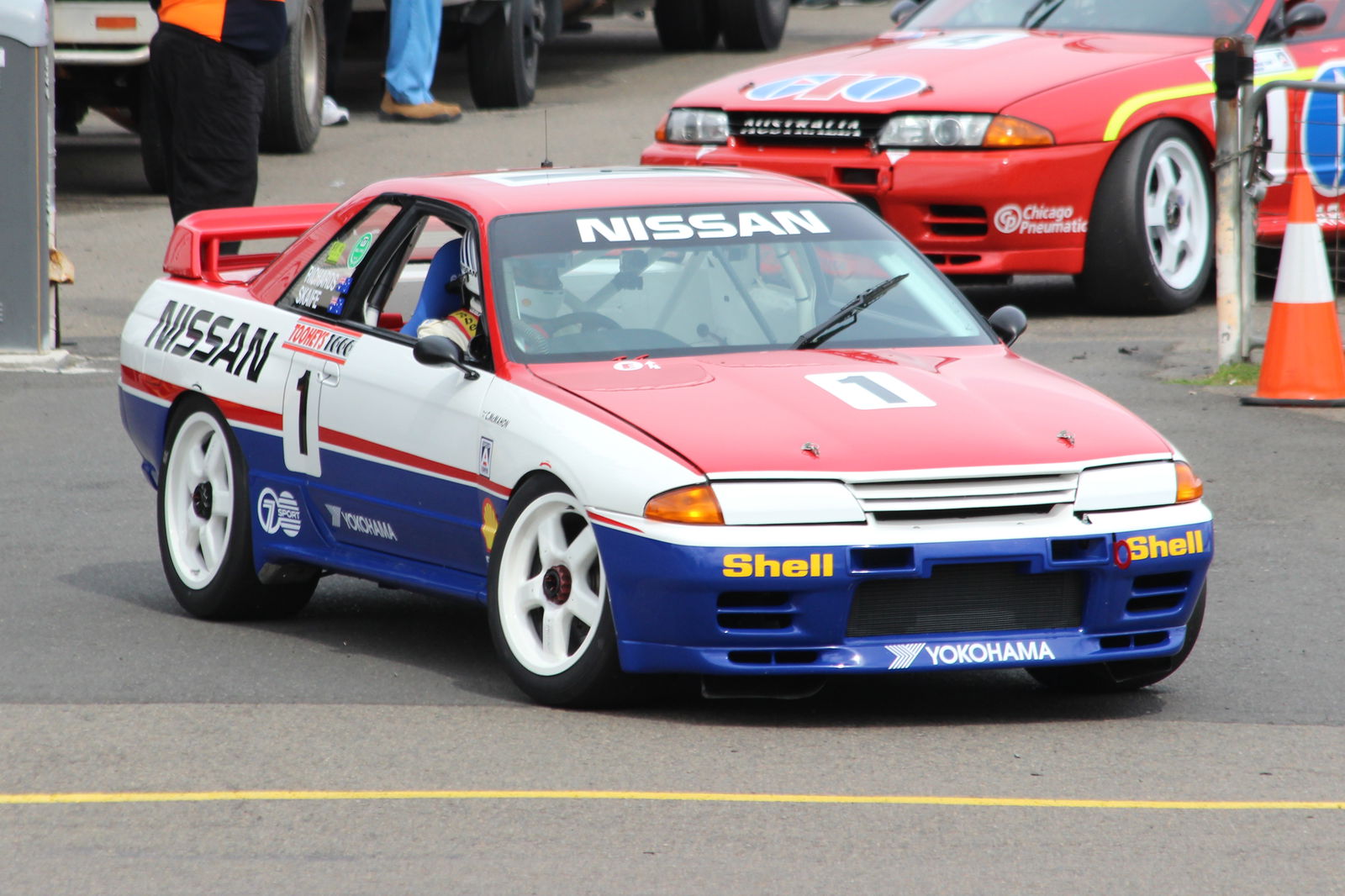
The Nissan GT-R R32 is still praised in the tuning world for its responsive chassis, iconic engine and phenomenal four-wheel drive system. So it’ll come as no surprise that the R32 made a pretty handy touring car back in the day, especially in the Australian Touring Car Championship, where the R32 took first and second place in the 1992 standings. But it was one event in particular that secured Godzilla its truly iconic status: the 1992 Tooheys 1000 at Bathurst.
An R32 had already won at Bathurst the year before - the first Japanese vehicle to win at the track - but it was the rain soaked 1992 event that has gone down in history. The race was absolute carnage with pools of standing water covering the track, but the R32 of Jim Richards and Mark Skaife was in its element, promptly clearing off into the distance while other cars simply aquaplaned off the track and into the extremely unforgiving concrete walls.
Soon the conditions had deteriorated so badly that even the R32 was having a hard time - ultimately, four-wheel drive doesn’t help when your tyres are no longer in contact with the tarmac, something Richards discovered on 145th lap when he followed his competitors into the wall at the tricky Forrest’s Elbow. Race over.
Ford and Holden fans could be heard all around the track whooping and hollering at the unfortunate fate of the Nissan. But the joke was on them. After Richards hit the wall, the officials had finally realised that the conditions were just too treacherous, bringing the race to an end. And in line with regulations, the race result was counted back one lap, declaring the Nissan duo the winners. On the podium the pair received a ridiculous level of chastising from the angry crowd, leading to Richards famously calling them a “a pack of arseholes”.
After this dominant show from Nissan, and its eventual 1992 Australian Touring Car Championship crown, the series’ regulations were changed in January 1993, banning four-wheel drive turbocharged cars from competition.
3. Lotus 88
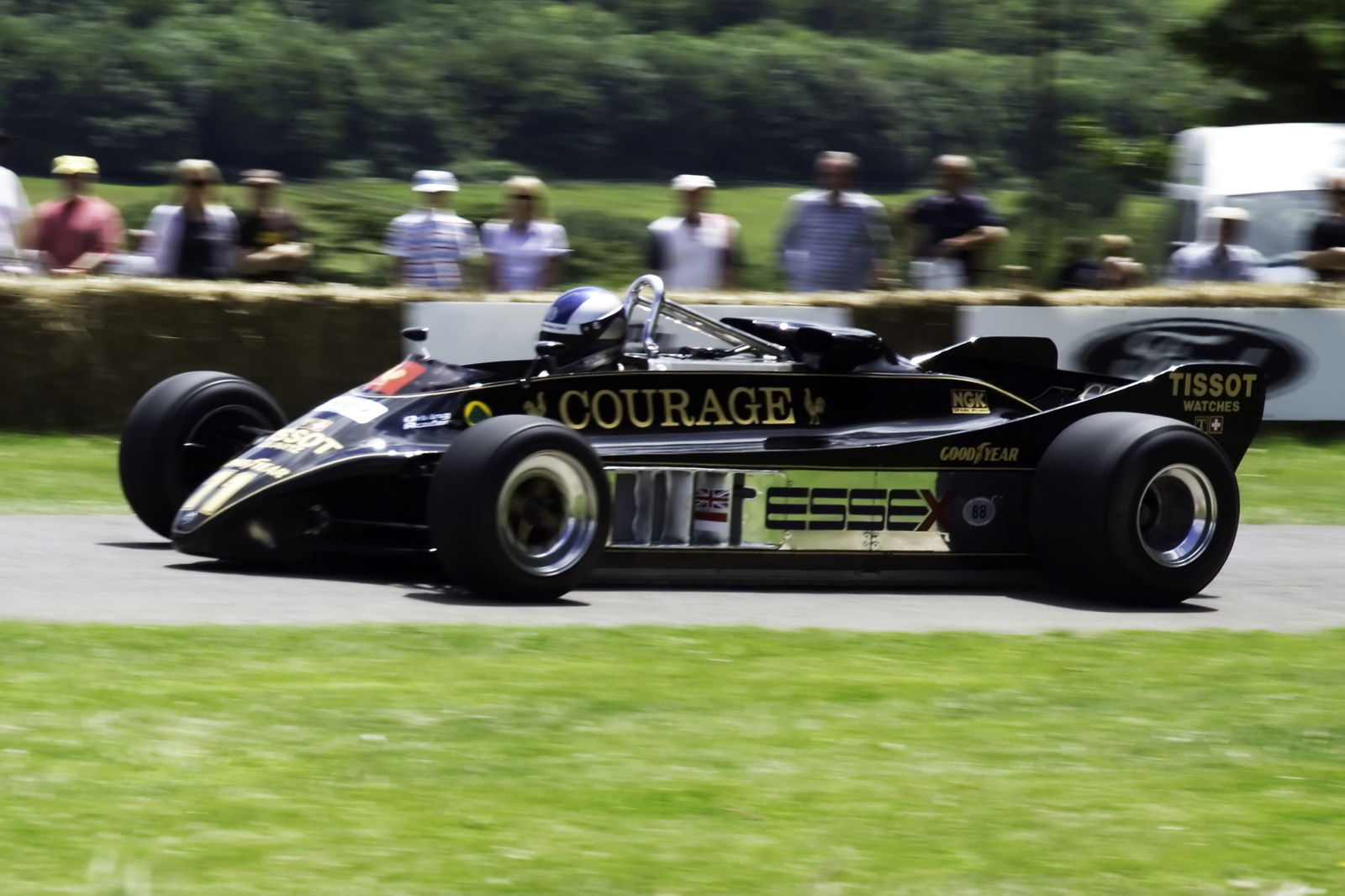
Towards the end of the 1970s, Formula 1 designers were just starting to get to grips with the finer points of aerodynamics. Granted, aero had been around since Colin Chapman unveiled Graham Hill’s winged Lotus 49B at the 1968 Monaco grand prix, but it took a further nine years for him to come up with the next big breakthrough: Ground effects.
After years of testing, Chapman developed a floorpan that worked like an inverted aerofoil, creating an area of low pressure under the racing car, giving significant levels of downforce. He trialled this design on the Lotus 78 and it was immediately dominant, taking the 1978 driver’s and constructor’s championship. As you can imagine, other teams quickly followed.
By 1981, the cars had become so fast that cornering speeds were becoming dangerously high; terrifying when you factor in the unpredictable nature of ground effects. On undulating tracks, drivers were finding that their cars were suddenly losing grip at high speed. The reason for this loss of traction? Well, in order to keep an area of low pressure under a car, there has to be enough space to let moving air pass under the floor freely. Like a wing, if no air flows over - or in this case under - the wing, its effects are nullified. This is what was happening to the low riding machines when they bottomed out. No air flow equalled no downforce, resulting in a sudden and unpredictable loss of aerodynamic grip.
To increase safety, the FIA banned moveable skirts and required a mandatory ground clearance of 6cm. The end of ground effects? Not if Chapman had his way. The ingenious designer found a way around these regulations. His new car, the Lotus 88 - based on the radical 86 test-bed - used a twin chassis, one located inside the other. The inner chassis contained the driver, fuel tanks and engine and the outer chassis was mounted directly onto the wheel uprights; both independently suspended. The flat outer chassis effectively worked as one massive ground effect system.
The car was tested at the first race of the season, Long Beach, and was instantly competitive. Unfortunately, as soon as the other teams caught on to Lotus’ clever design, they protested its legality. Stewards quickly declared the car illegal and the FIA followed suit, banning the car from competition. Another genius idea from Chapman thwarted.
4. Hendrick Motorsports Chevrolet "T-Rex" Monte Carlo
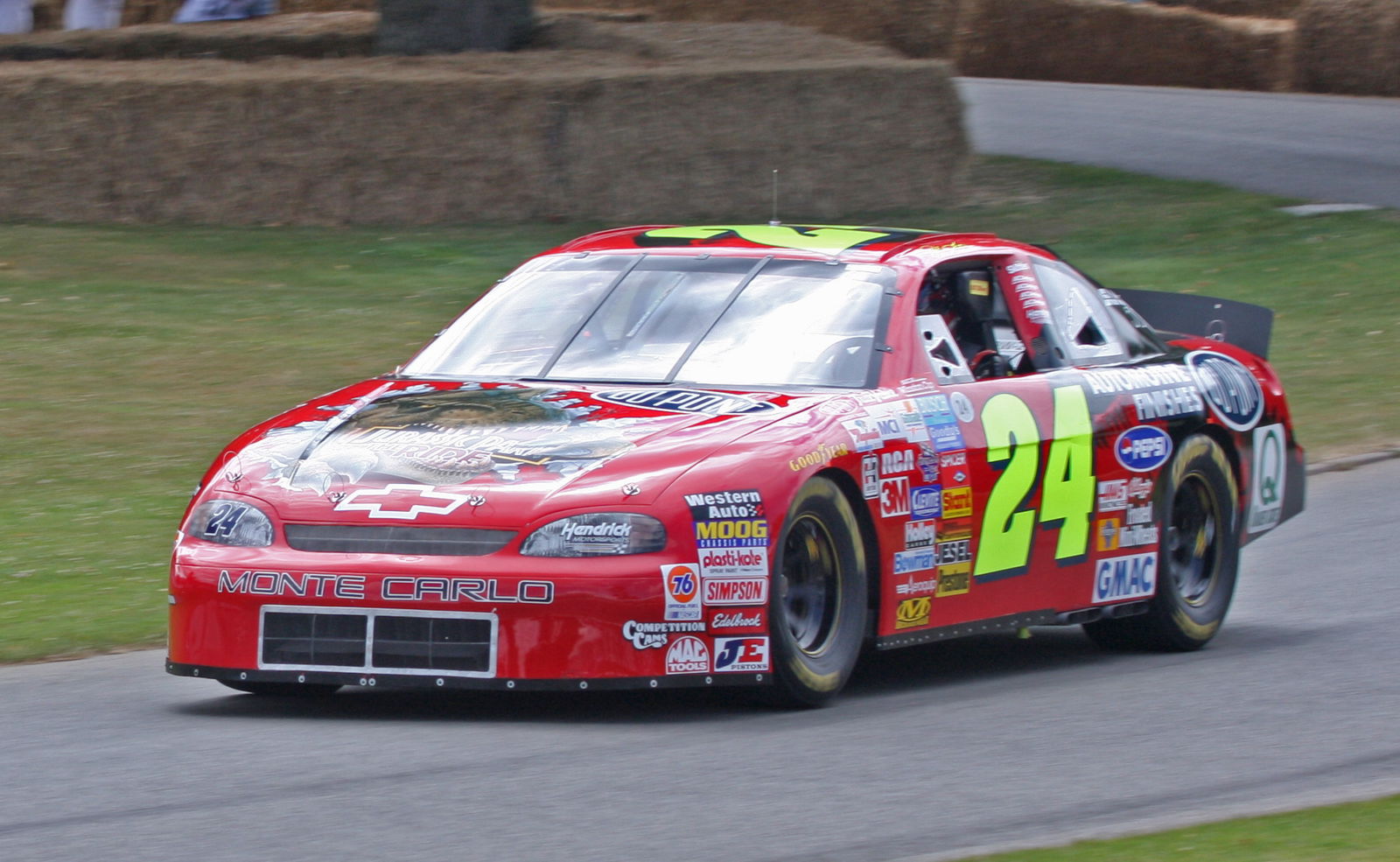
It takes a lot to get us excited about Nascar, but this machine has us fascinated. In 1996, Hendrick Motorsports, owned by Rick Hendrick, decided to build a custom Nascar from the ground up. Legendary chassis designer Rex Stump - hence the car’s name “T-Rex” - was hired and they set to work. Stump started with a blank piece of paper, building a car that made maximum use of the grey areas of the rulebook.
Stump has never revealed the full details of the build, but we know for sure that the specially designed car featured a strengthened chassis with bigger frame rails, redesigned suspension and an aerodynamically shaped floor. The latter modifications enabled the car to generate significant levels of low pressure under the car, creating unprecedented levels of grip; it was effectively ground effects in a Nascar.
When the T-Rex turned up to race at the 1997 Nascar All-Star Race, adorned in its iconic “The Lost World: Jurassic Park” livery, it was given the green light from the stewards - clearly the team had kept on the right side of the rule book after all. It also helped that the team’s driver, Jeff Gordon, had received a grid penalty for driving too quickly in the pit lane during qualifying, putting him down in 19th for the start; it’s always best to keep your winning hand concealed.
When the race started Gordon scythed through the field with ease, the car looking absolutely planted on the high-speed Charlotte Motor Speedway bowl. Gordon won the race easily, leaving onlookers puzzled. As soon as the race was over, the other teams immediately protested the specially designed car. Supposedly they were worried that they’d have to build all-new cars in order to compete with the T-Rex.
Thankfully Gordon’s win was allowed to stand on the basis that the team hadn’t actually done anything technically wrong. But the Nascar officials quickly changed the rules after the race, effectively banning the car from competition.
5. Dodge Charger Daytona
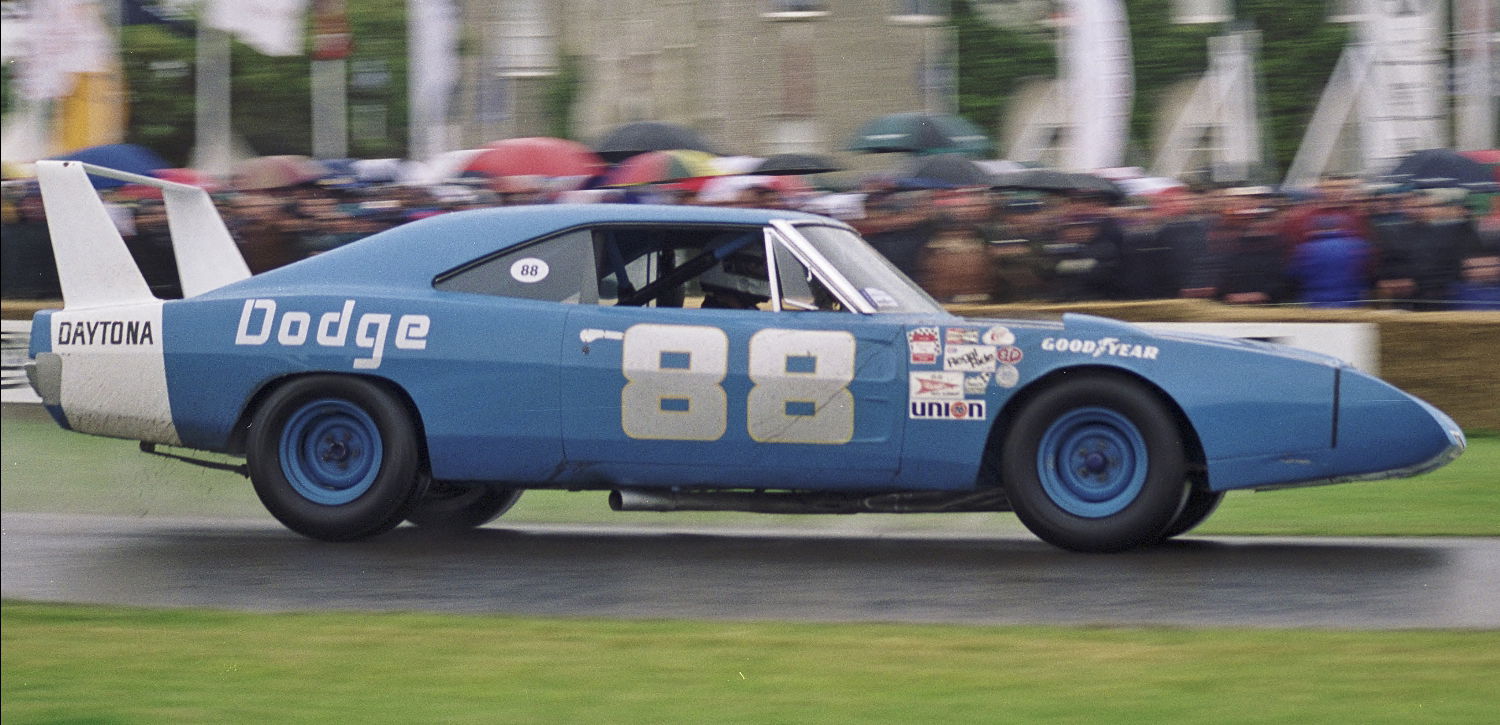
After Dodge struggled with its Charger 500 in the first-half of the 1969 Nascar championship, the Michigan-based company decided to take some drastic measures. The standard car was taken down to a wind tunnel where the designers immediately recognised that a car shaped like a brick was going nowhere quickly. To rectify the problem, they added a huge sloped nose cone and fitted a 23-inch rear wing.
With an impressive 0.28Cd drag coefficient (an R35 GT-R has a Cd of 0.26) the new Charger Daytona was noticeably quicker than its predecessor, breaking the 200mph barrier at the famous Talladega Superspeedway. The car also won on its race debut, demonstrating that good aerodynamics were vital. In fact the car was so quick, Plymouth driver Richard Petty demanded that Plymouth build a similar car for 1970. In response, Plymouth gave the Road Runner the full “Winged Warrior” treatment, transforming it into the iconic Superbird.
The Daytona won the 1970 Nascar Grand National Series overall, but it was the Superbird that caught the hearts and minds of the public, winning eight races in the hands of Petty. Unfortunately, after watching race speeds increase, and qualifying speeds creep up to 200mph, Nascar officials decided to bring the “Winged Warrior” era to an end, banning the thundering behemoths from the track.
So CTzens, which one of the five is your favourite? Let us know in the comments below!
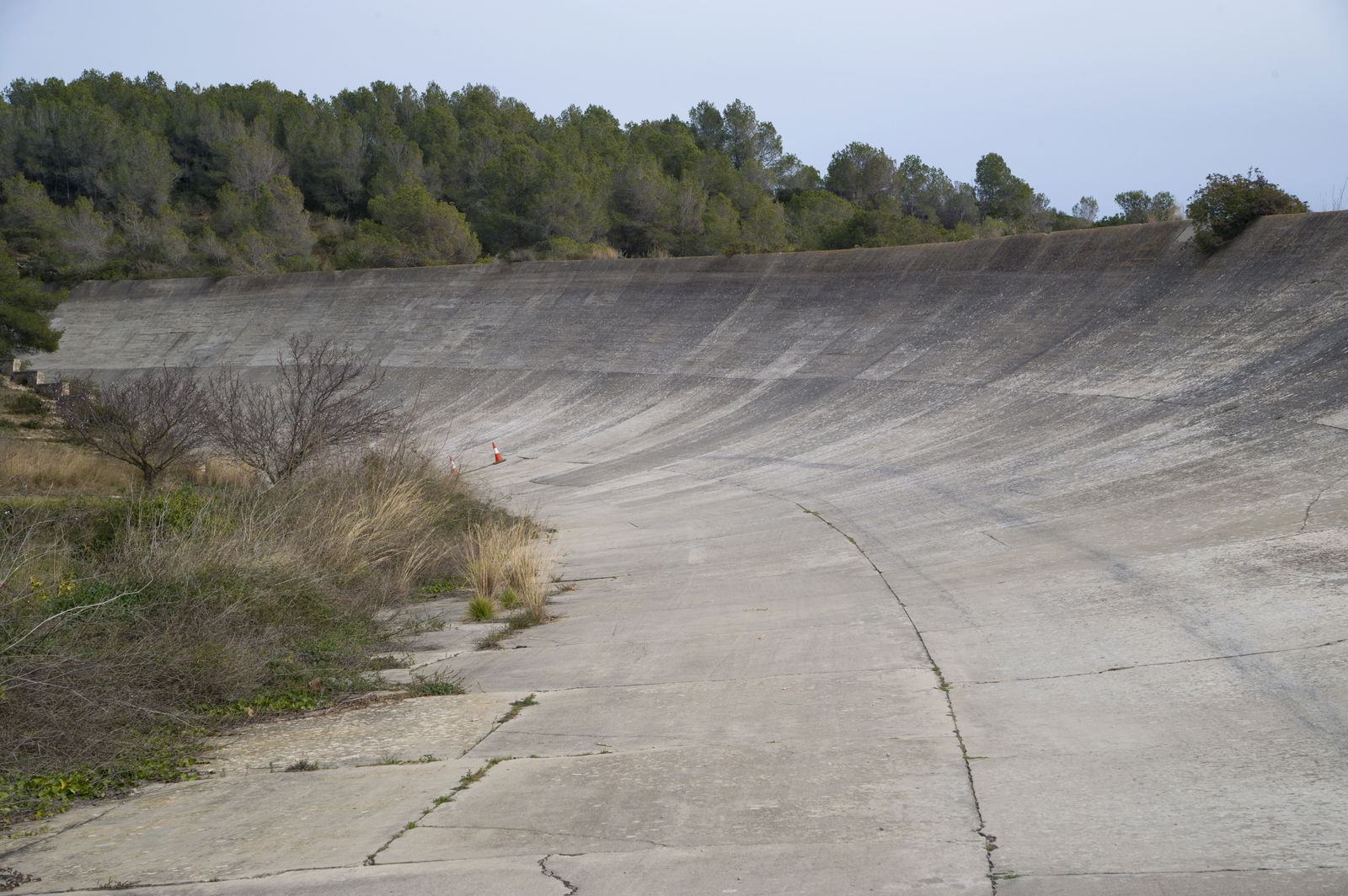
Comments
What about the Mazda 787B wih the wankel engine?
Williams unleashed one of the greatest technological blows the sport has ever seen in 1992 when their computer-controlled active suspension FW14B stormed the championship.
The technological onslaught continued in 1993 as traction control and anti-lock braking became commonplace and Williams’ rivals up and down the pit lane grappled with active suspension.
Astonishingly even as the FIA sought to ban the expensive innovations, several teams concocted radical new technologies even though they knew they would be illegal in 1994. Benetton’s four-wheel steer (discussed in an earlier ‘Banned!’) was one.
Another was Williams’ Continuously Variable Transmission – which could have revolutionised the way F1 cars sound, had it not been banned.
Great engineering innovations often start with an inspired logical observation. Here’s one:
If a car’s engine is constantly decelerating and accelerating, it is not operating at maximum efficiency. To do that it should rev constantly at the optimum point of power and torque.
This point was well understood by car engineers outside of Williams long before 1993. One solution was to do away with a conventional gearbox and instead use a system of pulleys to adapt the engine’s power in line with what the driver required.
The system – continuously (or “continually”) variable transmission – existed in various different forms. DAF had produced a road car in 1958 called the 600 (or “A-Type”) which featured a “Variomatic” gearbox – which was essentially a CVT.
The problem for using such technology in racing cars was the difficulty of finding a strong enough belt to transit the power from an F1 engine.
In 1993 Williams cracked it and David Coulthard tested the car on a wet July day at Pembrey in Wales. It was later driven by touring car racer Alain Menu (his Renault 19 race car was prepared by Williams at the time).
At first it was feared that a ban on electronically controlled gearboxes would do away with the CVT before it could race. But in the end the FIA came up with something much more direct to get rid of it.
They stipulated that, from 1994, F1 cars had to have between four and seven fixed gears – and for good measure added a sub-clause specifically banning CVT.
Williams’ CVT car sounded revolutionarily different to contemporary (and modern) F1 cars because of the different way it used the engine. Instead of the revs rising and falling with each corner they remaining constant through each bend – a wholly unusual sound for spectators.
There was also speculation that it had instantly proved several seconds per lap quicker than the conventional Williams – which was already streets ahead of its rivals.
Although the technology and offshoots of it have been used in road cars it remained too exotic for the increasingly stringent demands of Formula One. A lone, unraced Williams-Renault CVT sits in a DAF museum somewhere.
BT46B
Audi quattro,metro 6r4,ford rs200,peugeot T16
And here in greece, we have a legend, and i don’t know if it is true, but they say that a wilcox-powered escort was so fast at rallying-hillclimb they literally changed the racing groups so as to ban this one from racing at its own category..
It was just before I was born but I’m genuinely ashamed of some Aussies reaction to the R32 GTR, it was simply an excellent piece of engineering, give credit where credit is due. If they kept it in Bathurst, Holden and Ford might’ve ended up making better Commodores and Falcons because of it. I’d probably show a lot more interest in racing here if all the cars weren’t basically the same thing- RWD 5 litre V8s.
Racing is like school. They want you to be equal and focus on the weaker ones.
Where’s this badboy?
Why no Group B rally cars? Group B was basically banned because the cars were too powerful.
That BTCC footage was amazing
One thing I hate about racing is that if someone is significantly better or a certain car is built better than the others then they shut down the innovation behind it, I understand yes they have an advantage and it needs to be an even stock car race, but can’t certain companies just man up and do something to compete with the better car?
The main reason is why a rule is changed, is becouse whining people that are jealous
Pagination